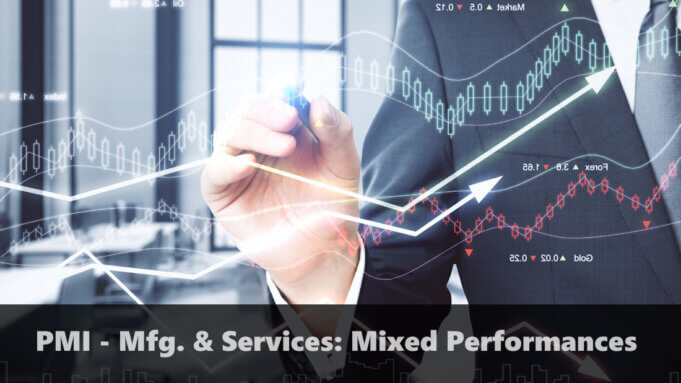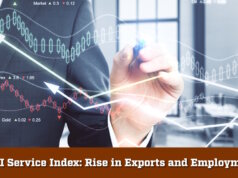PMI Manufacturing
The Indian manufacturing sector began 2025 on a robust footing, rebounding from a slight slowdown in December 2024. January 2025 witnessed a surge in new orders, driven by a healthy increase in export demand in nearly 14 years. This growth momentum translated into an accelerated expansion in production levels. Additionally, purchasing activity picked up, employment growth hit a record high, and cost pressures eased to their lowest level in nearly a year. Despite a modest rise in input costs, manufacturers were able to pass on some of the burden to customers through higher selling prices, buoyed by strong demand. Business confidence also showed a marked improvement.
The HSBC India Manufacturing Purchasing Managers’ Index (PMI) rose to 57.7 in January from December’s one-year low of 56.4. This increase indicated a strong expansion in the sector, marking the fastest pace of growth since July 2024 and surpassing the long-run average.
Manufacturers reported a significant rise in new orders, attributing the uptick to stronger domestic demand and a sharp increase in international sales. Notably, the rate of expansion in export orders was the highest recorded in nearly 14 years, reflecting stronger global demand for Indian goods. As a result, production volumes saw substantial growth, registering the fastest expansion since October 2024.
Encouraged by rising sales and strong future growth expectations, manufacturers increased hiring at an unprecedented rate. Employment expansion reached its highest level in nearly two decades. Purchasing activity also rose sharply, with firms accelerating their stock-building efforts. Supplier performance improved, leading to the fastest inventory accumulation since October 2024.
However, finished goods inventories declined for the second consecutive month as demand growth outpaced production. This depletion of stocks was the most pronounced in nearly three years.
Input costs continued to rise in January due to increased expenses on freight, labour, and raw materials. However, the overall inflation rate was the lowest since February 2024. Selling prices for manufactured goods increased at a slower pace compared to previous months but remained above the long-run average, supported by strong client demand.
Despite these growth trends, capacity pressures remained mild, as employment gains allowed firms to efficiently manage workloads. The fractional rise in outstanding business volumes reflected manufacturers’ ability to keep pace with demand through timely workforce expansions.
PMI – Services
After ending 2024 on a strong note, the Indian services sector experienced a slight moderation in growth momentum in January 2025. New business inflows expanded at the slowest rate since November 2023, resulting in a slight deceleration in business activity. Nevertheless, growth levels remained historically high, and firms continued to add jobs at an accelerated pace. Business confidence remained in line with its long-term trend.
The HSBC India Services PMI Business Activity Index declined from 59.3 in December to 56.5 in January, marking its lowest level since November 2022. Despite this decline, the services sector continued to expand at a sharp rate.
Firms attributed output growth to strong demand, new business wins, and technological investments. However, some service providers faced challenges due to a decline in customer numbers. While overall new business continued to rise, the pace of expansion was the weakest in 14 months. Competition remained intense, with some firms resorting to price reductions to maintain market share.
In contrast, international demand for Indian services strengthened, with higher sales recorded in Asia, Europe, the Middle East, and the USA. The rate of expansion in foreign orders reached a five-month high.
Ongoing demand and rising capacity pressures led service providers to ramp up hiring at the start of the fiscal quarter. Firms reported filling both full-time and part-time positions, with employment growth accelerating from December. This marked one of the fastest rates of job creation since data collection began in 2005.
Service providers remained optimistic about future business prospects, expecting growth over the next 12 months. Cost pressures persisted, driven mainly by rising staff wages and higher food prices. Inflation remained elevated compared to the long-run average, though it showed little change from December’s level.
Cover photo: www.pexels.com











